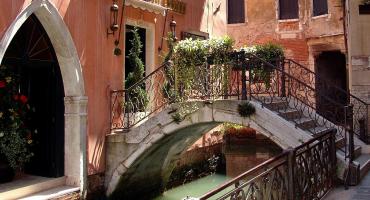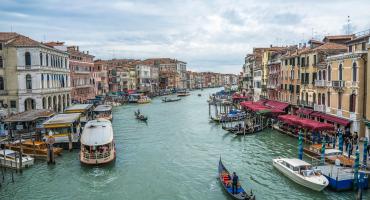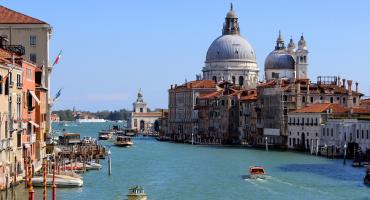And if, while strolling through Venice, crossing the Grand Canal at Rialto, we happened to let our hand slide along the balustrade of the bridge, so smooth and frictionless, polished by millions of other hands that have caressed its white slope before ours... we could say that we have touched the History of Venice but also something that goes beyond... beyond History.
Geology in Venice Lives in Harmony with Architecture
In Venice, even a simple puddle can leave an "eternal" mark in one of the most famous places on this planet. The balustrade of an iconic architectural symbol of Venice, the Rialto Bridge, reveals in some sections of its surface a clear polygonal pattern that is completely natural, represented by incisions forming an irregular broken line: these are fossilized desiccation cracks.
The balustrade of the Rialto Bridge is made of a material with exceptional mechanical properties, very common in Venice—a sedimentary rock almost impervious to the harsh conditions of the lagoon environment. This rock is a type of limestone (composed of almost pure calcium carbonate) with a bright, luminous white color, very compact: the Istrian Stone.
More than a hundred million years ago, before it was a rock, the Istrian Stone was a mud composed of almost pure calcium carbonate. The shallow seabed where this "soft" sediment was deposited experienced periodic emergences, forming polygonal cracks similar to those seen at the bottom of a dried-up puddle. The rapid "hardening" and equally rapid cementation of the carbonate sediments (composed of calcium carbonate) preserved these "mud cracks" through millions of years. On the Rialto Bridge, nature and culture literally intertwine.
About the Author: Tullio Padovese
Tullio Padovese graduated in Geological Sciences from the University of Ferrara in 2001 with a thesis in Paleontology. He worked for three years in the field of Environmental Geology, also conducting subsurface investigations of the Venice Lagoon. He currently teaches Science and Mathematics in middle schools. For middle schools, he has developed an educational itinerary dedicated to the stone materials used in the construction and cladding of historic buildings and monuments in Venice.



